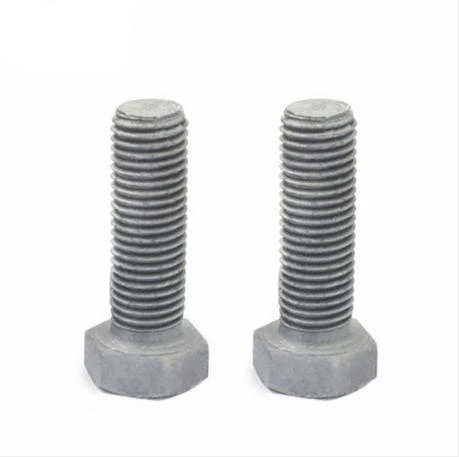

Selecting the Right M6 and M8 Washers for Your Project Needs
Dec . 06, 2024 10:11 Back to list
Selecting the Right M6 and M8 Washers for Your Project Needs
Understanding M6 and M8 Washers Essential Components in Engineering and Construction
Washers are small, yet crucial components in various mechanical and construction applications. Among the most commonly used types are M6 and M8 washers, named after their respective metric screw sizes. The M6 washer is designed for screws with a diameter of 6 mm, while the M8 washer is intended for 8 mm screws. Understanding the specifications, applications, and benefits of these washers is vital for engineers, builders, and DIY enthusiasts alike.
Specifications and Types
M6 and M8 washers come in various materials including steel, stainless steel, plastic, and brass, each offering different levels of strength, corrosion resistance, and flexibility. The choice of material typically depends on the environment in which the washer will be used. For instance, stainless steel washers are ideal for outdoor applications or in moist environments due to their resistance to rust and corrosion.
These washers also come in multiple forms, such as flat washers, spring washers, and lock washers. Flat washers distribute the load of a threaded fastener, preventing damage to the materials being fastened. Spring washers provide tension and can absorb shock, making them suitable for dynamic applications where movement might loosen a bolt. Lock washers prevent the loosening of bolts due to vibration, which is essential in automotive and machinery applications.
Applications
M6 and M8 washers are used in a wide range of applications across various industries. In the construction sector, they are integral to securing structural components, such as steel beams and wooden frames. By distributing the load of the bolt or nut, these washers help maintain the integrity of the structure over time.
In automotive applications, M6 and M8 washers play a critical role in ensuring that components remain securely fastened despite vibrations and the dynamic forces experienced during operation. They are commonly found in engine mounts, chassis assemblies, and suspension systems.
m6 m8 washer

In domestic settings, these washers are essential for assembling furniture, appliances, and playground equipment. Their role in ensuring fasteners remain secure is vital for the safety and durability of constructed items.
Benefits of Using M6 and M8 Washers
One of the primary advantages of using M6 and M8 washers is enhanced load distribution. When a bolt is tightened, it can create a localized stress point that may lead to material deformation or failure. By employing washers, this force is spread across a larger surface area, minimizing potential damage.
Additionally, washers can protect surfaces from scratches and wear. The flat surface of a washer acts as a barrier between the bolt and the material being fastened, reducing friction and preventing direct contact that could lead to corrosion or damage.
The use of lock and spring washers further enhances the reliability of fastenings. Lock washers, for example, use elastic deformation to maintain tension, while spring washers exert a force that keeps components tightly held together, even under vibrations.
Conclusion
In summary, M6 and M8 washers are fundamental components in mechanical assemblies and construction. Their ability to distribute load, protect surfaces, and prevent loosening under dynamic conditions makes them invaluable in various applications. Whether in the aerospace industry, automotive engineering, or simple home repairs, these small yet powerful devices ensure the safety, reliability, and longevity of the structures and machines we build and maintain.
As industries continue to advance and demand higher standards of safety and efficiency, the role of these washers will undoubtedly evolve, cementing their place as essential elements in engineering and construction. Understanding their specifications, applications, and benefits empowers individuals to make informed choices, ensuring successful and safe outcomes in all their projects.
Latest news
-
Premium Fasteners Manufacturer | AI-Driven Solutions
NewsAug.01,2025
-
Hot Dip Galvanized Bolts - Hebei Longze | High Strength, Corrosion Resistance
NewsAug.01,2025
-
High-Strength Hot Dip Galvanized Bolts - LongZe | Corrosion Resistance, Custom Sizes
NewsAug.01,2025
-
Best Self Tapping Screws for Drywall - Fast & Secure Installation
NewsJul.31,2025
-
High-Strength Hot Dip Galvanized Bolts-Hebei Longze|Corrosion Resistance&Customization
NewsJul.31,2025
-
Hot Dip Galvanized Bolts-Hebei Longze Metal Products|Corrosion Resistance&High Strength
NewsJul.31,2025

